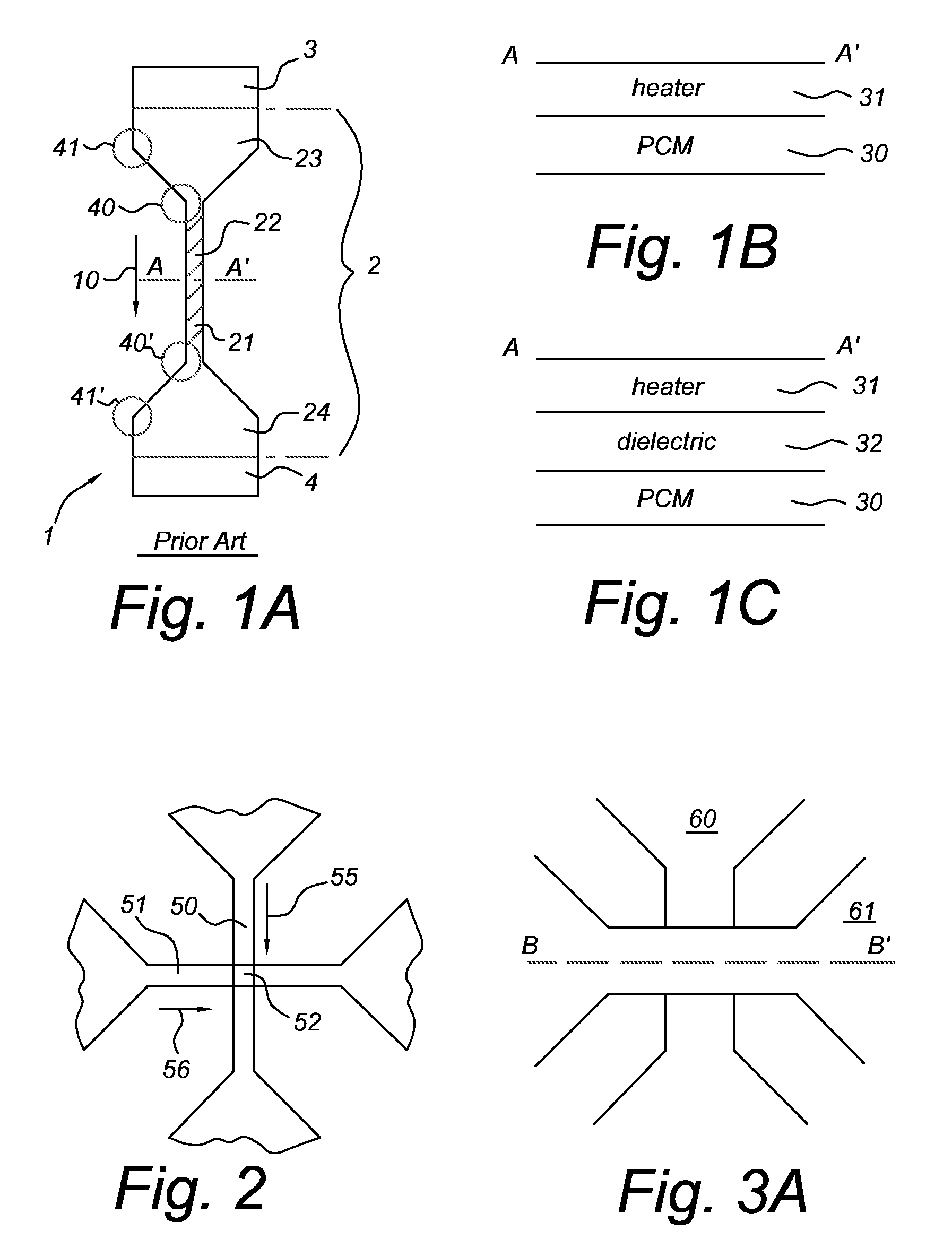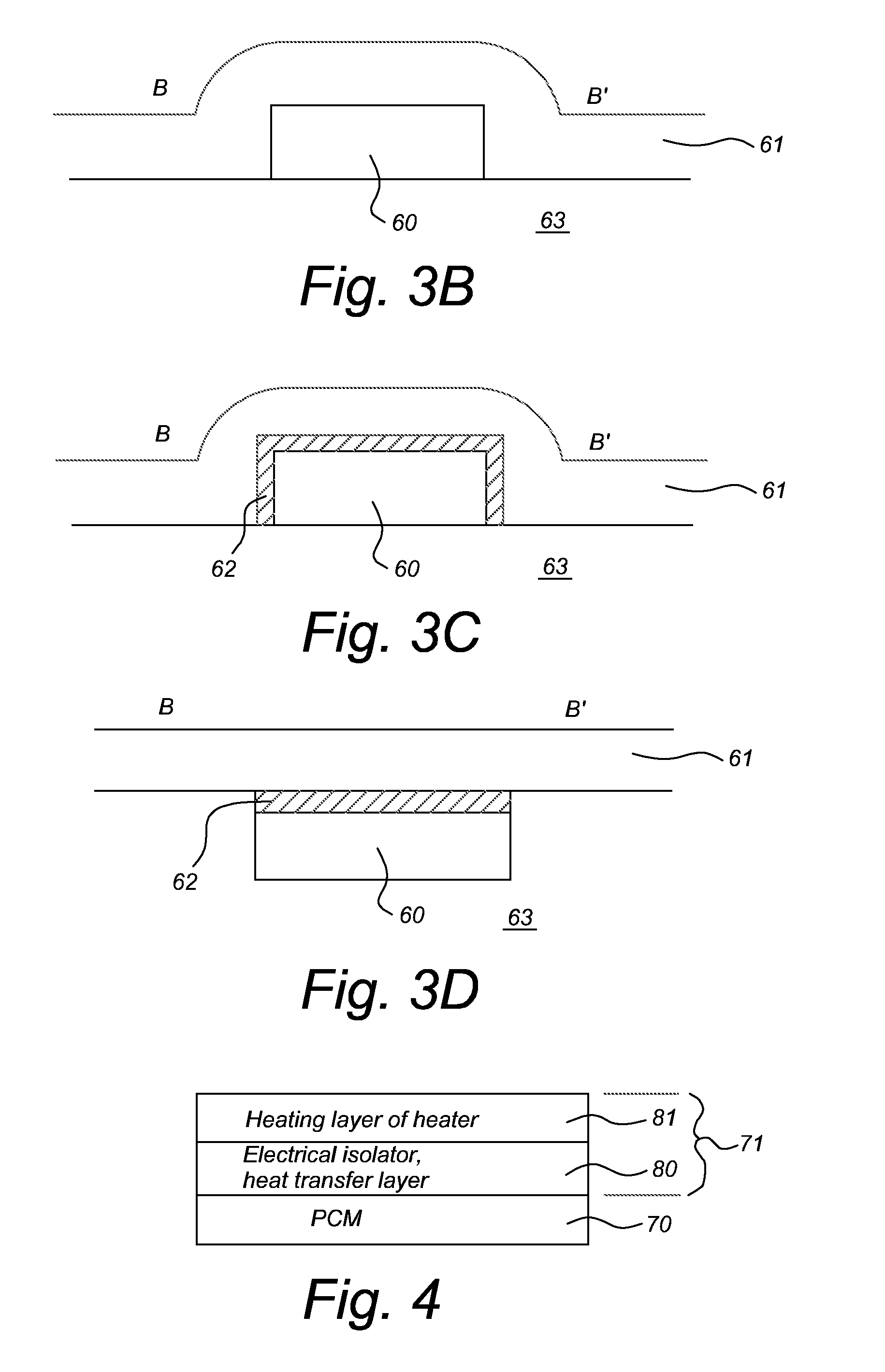Electric device comprising phase change material and heating element
a phase change material and heating element technology, applied in semiconductor devices, digital storage, instruments, etc., can solve the problems of further limit delamination and segregation of pcm electrodes, lower electrode temperature, etc., and achieve high electrical isolation, high thermal, and high electrical conductivity.
- Summary
- Abstract
- Description
- Claims
- Application Information
AI Technical Summary
Benefits of technology
Problems solved by technology
Method used
Image
Examples
Embodiment Construction
[0045]FIG. 1A shows a prior art resistor 1 which comprises a phase change material section 2, which is connected to the rest of the electric device via an electrode 3 and a counter electrode 4. A current path denoted by arrow 10 runs from the electrode 3 through the phase change material section 2 through electrode 4. The phase change material section 2 is deposited as a line on a substrate, such as a single crystal p-doped silicon semiconductor wafer. The phase change material is changeable between a first phase and a second phase. The resistor 1 has a first electrical resistance when the phase change material is in the first phase and a second electrical resistance, different from the first electrical resistance, when the phase change material is in the second phase. The phase change material section comprises a narrow part 21, which comprises a switching zone 22, and wide parts 23, 24. The wide parts 23, 24 connect the phase change material to the electrode 3 and the counter elec...
PUM
 Login to View More
Login to View More Abstract
Description
Claims
Application Information
 Login to View More
Login to View More - R&D
- Intellectual Property
- Life Sciences
- Materials
- Tech Scout
- Unparalleled Data Quality
- Higher Quality Content
- 60% Fewer Hallucinations
Browse by: Latest US Patents, China's latest patents, Technical Efficacy Thesaurus, Application Domain, Technology Topic, Popular Technical Reports.
© 2025 PatSnap. All rights reserved.Legal|Privacy policy|Modern Slavery Act Transparency Statement|Sitemap|About US| Contact US: help@patsnap.com



